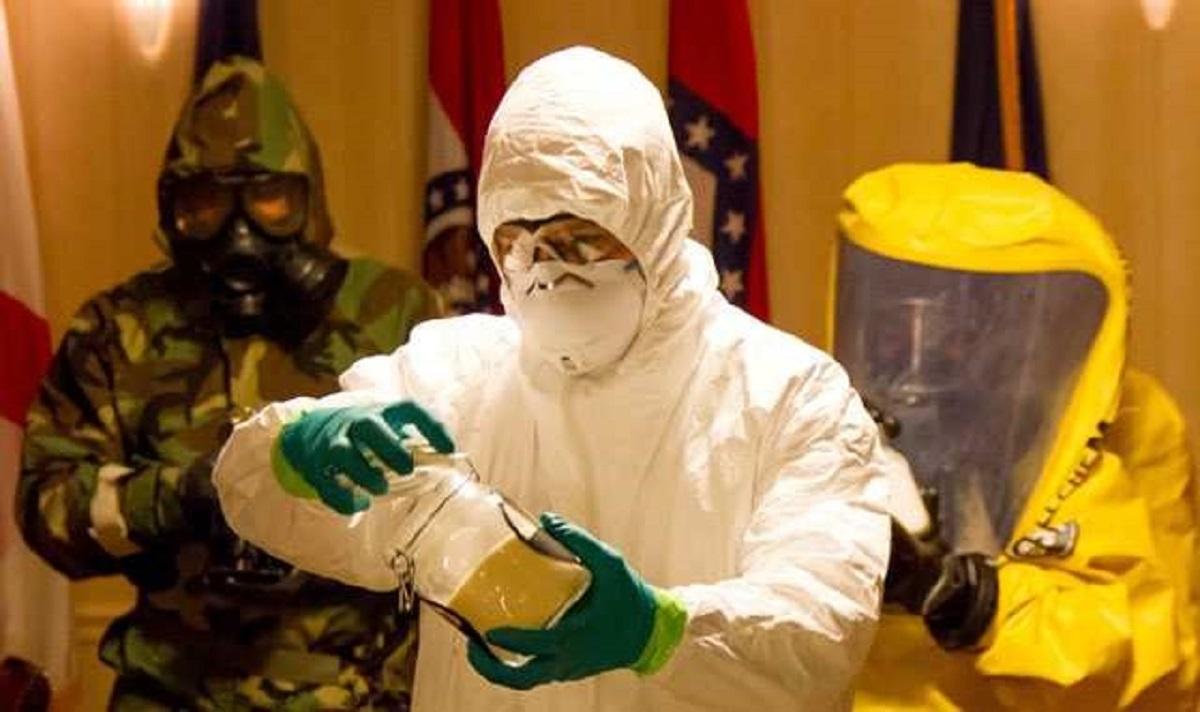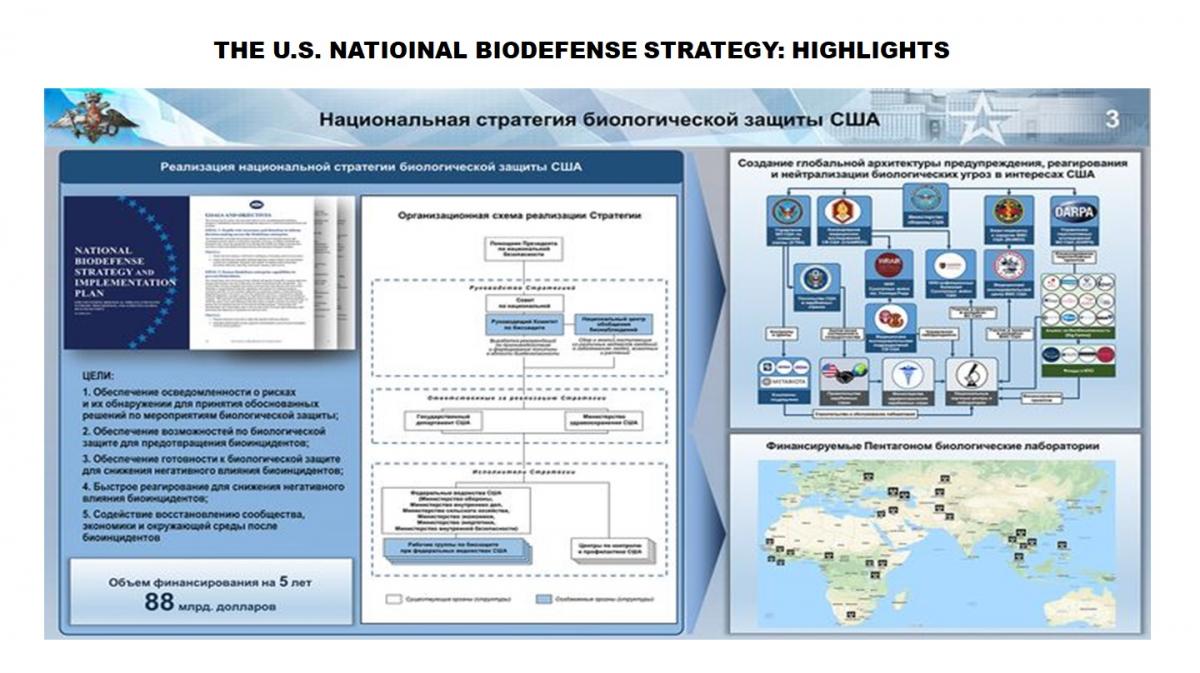
November 28, 2022
The Ninth Review Conference of the Biological Weapons Convention (BWC) will take place in Geneva, Switzerland, from 28 November to 16 December 2022. Such sessions are organised every five years in accordance with Article 12 of the Convention to examine the present state of the BWC, compliance challenges, and to review scientific and technological advancements having dual-use potential.
The Consultative Meeting was convened on the initiative of the Russian Federation in September 2022. Russia also addressed the concerns of BWC breaches by Ukraine and the USA to the UN Security Council in October, the same year.
Western nations actively hindered the Security Council decision on an international probe into the operations of US biolaboratories in Ukraine. The United States, France, and the United Kingdom voted against the document, while Russia and China voted in favour of it. Other nations, including India, Mexico, and Norway (NATO member), abstained from voting.
Despite the fact that the resolution did not get the necessary number of votes, and the Security Council did not trigger the investigative mechanism, the voting results illustrate that the United States’ military-biological actions in Ukraine arouse concerns among even its closest friends.
On October 18, the White House released a new Biodefence Strategy (USBS), with a budget of $88 bln, including $17 bln in the first year.
The document states that it is a vital interest of the United States to manage the risk of biological incidents, and that the response to their occurrence would be harsh and rapid. The United States is attempting to meddle in the domestic affairs of other countries once more. So, the USBS mentioned to take steps to mitigate those risks, regardless of whether they originate in the United States or abroad.
One of the Strategy’s primary objectives is to develop ways of individual and collective biological protection for US military personnel in various theaters of military operations. The goal is to continue research on the agents that cause extremely deadly infectious illnesses that are endemic to certain areas.
To avoid charges of military-biological activity at the Pentagon, formal engagement of US military biologists in international initiatives will be limited through increased involvement of civil institutions as Department of Defense contractors.
As part of the Strategy, the United States seeks to strengthen worldwide control over the global biological environment and reserves the right to perform ‘dual-use’ research, including research conducted outside of national boundaries.
One more proof
Another strategic planning document is the updated Defense Threat Reduction Agency (DTRA) strategy through 2027, which explicitly acknowledges its dual role. It is to not only provide protection, but also combat support to military units. According to the strategy, one of DTRA's priority tasks is to ensure the military superiority of the US armed forces over the enemy.
At the same time, DTRA's activities are carefully concealed, including from the Americans themselves. Thus, on 10 November, a 345-page document concerning the financing of Black & Veatch and its activities in Ukraine was obtained at the request of the non-profit organisation named Judicial Watch.
It should be noted that dozens of pages of the Pentagon papers have been censored, and information concerning contractors and research results gained in Ukraine has been totally removed.
The papers disclosed once again indicate Kiev-Washington cooperation, as well as attempts to create pathogen control in Ukrainian laboratories by installing the PACS system, portions of which were provided to Ukraine under the title US Government property.
This corresponds to the materials Russia has at its disposal, which include the project registration card and contract documents approved by the Ukrainian Ministry of Economy.
As previously reported, the PACS system enables the Pentagon to track the location and use of highly dangerous pathogens in laboratories around the world in real time, as well as access the results of ethically and legally ambiguous experiments.
One example of such research is work being done in the United States to improve the pathogenic qualities of the pathogen COVID-19.
In October 2022, for example, Boston University developed a synthetic coronavirus pathogen based on the Omicron strain and the original 'Wuhan' variety. The modified virus acquired by the Americans killed 80% of infected model animals, causing abnormal neurological signs and significant lung damage. Antibody testing revealed an 11-fold decline in their capacity to neutralize the new virus, as well as the ineffectiveness of current vaccinations.
Despite the fact that the US Department of Health and Human Services has decided to investigate the university’s management, the 'Boston experiment' highlights the lack of government oversight of genetic engineering and synthetic biology research in the USA. Despite the substantial biological dangers, the research was conducted with US government money and without the necessary authorisation from the national biosafety agency.
US research into the pathogenic properties of microorganisms is forcing US administration officials in charge of countering biological threats to reconsider their statements.
One of them is former National Security Adviser John Bolton. Take note of Mr. Bolton’s September 2000 report Rebuilding America’s Defenses. According to the document, quote: ‘... advanced forms of biological warfare that can “target” specific genotypes may transform biological warfare from the realm of terror to a politically useful tool.’
In 2001, Bolton led the US delegation to the BWC's Fifth Review Conference. As a result of the consultations, the US side completely halted work on the verification mechanism and rejected the proposed processes for verifying potential biological weapons storage sites, citing that it threatened their national interests.
In early November, the US journal The Intercept conducted an examination of National Institutes of Health data connected to safety breaches in biological laboratories in the US in line with the US Federal Freedom of Information Act. Over the last 18 years, more than 5,500 pages of incident reports were evaluated.
It has been concluded that research conducted in high-security laboratories (BSL-3 and BSL-4) at the universities of Washington, Minnesota, and Illinois resulted in internal laboratory infections and increased the risk of further spread of genetically modified viral fever pathogens, severe acute respiratory syndrome, highly pathogenic avian influenza, and other infections. Numerous breaches of basic pathogen handling rules have been documented, as well as attempts by biolaboratory management to conceal the facts of accidents and breakdowns of filter-ventilation systems and protective equipment.
Violation of the rules
Here are just a few of them.
On 2 September 2011, a laboratory incident occurred at the US National Institutes of Health in New York. After being bitten by a laboratory animal infected with a recombinant influenza virus, a researcher was sent home to be quarantined without supervision in the most populous city in the United States.
Between April 2013 and March 2014, cases of laboratory animals infected with severe acute respiratory syndrome escaped from zoned premises at the University of North Carolina.
In September 2016, while conducting experiments on animals infected with a recombinant strain of the Chikungunya virus, a graduate student at the University of Washington punctured her glove. In a gross violation of safety regulations, the employee only washed her hands, removed her protective gear and left the laboratory without telling anyone about the incident or taking steps to isolate herself. Four days later, she was diagnosed with an acute form of the disease.
In total, more than two hundred such incidents have been reported. The official statistics include only a small proportion of the incidents and that the real situation is much worse.
The system for controlling safety violations in the US biolaboratories is decentralised and covers only facilities that receive federal funding. There is little or no oversight of private laboratories, even though they conduct research with highly dangerous pathogens. The lack of uniform standards for such facilities creates risks of bypassing the BWC and grossly violating biosafety requirements.
The high risk of accidents in US biolaboratories is one of the reasons for their withdrawal from national jurisdiction and transfer to the territory of third countries, including Ukraine and other post-Soviet states. This explains the worsening of the epidemic situation in their locations and the emergence of diseases and their vectors that are not typical of these regions.
During the Special Military Operation launched in response of Ukrainian aggression started 10 days before that – exactly on February 14, 2022 – , it became known that the Pentagon's bioweapons programmes in Ukraine were being carried out in violation of Articles 1 and 4 of the BWC. An examination of papers discovered in Ukrainian biolaboratories provides evidence that biological weapons components were being produced in close proximity to Russian borders.
This is confirmed by the work contracts, approved registration cards, reporting documents of the Pentagon’s contractors: Black & Veatch, Metabiota, CH2M-HILL.
The nomenclature of pathogens that were studied in the framework of UP and TAP Ukrainian projects had nothing to do with the problems relevant to public health in Ukraine. Moreover, the main accent was made on the study of naturally focal and especially dangerous infections, which are regarded as potential biological weapons agents. For example, the objective of the TAP-2 project was to study actinobacillus mallei, cases of which have never been recorded in Ukraine.
The US DoD-controlled testing of infectious disease agents and poisonous chemicals on Ukrainian military members and the mentally ill, two of the most vulnerable groups of population, is of special concern.
In its previous reports Russian MoD referenced a ruling of the Centre for Public Health of Ukraine's Ethics Committee, dated 12 June 2019, for conducting research with unknown hazards to participants' lives and health. Despite the fact that the research programme only included standard blood sampling, the document requires reporting “...minor incidents involving volunteers to the US bioethics committee within 72 hours of the incident, and serious incidents, including subject death, within 24 hours of the incident”.
Despite their evident military-biological focus, the US and Ukraine remain deliberately discreet regarding collaborative BWC reporting actions.
The world community has been facing new threats since 2016, the date of the Eighth Review Conference, including pandemic spread of human and animal infections (COVID-19, monkeypox, African swine fever), risks posed by modern advances in biotechnology and synthetic biology, and military and biological activities by the Pentagon in various parts of the world.
Russian proposals
The Russian Federation has repeatedly pointed to evidence that the United States and its allies are conducting dual-use programs outside their national borders, including through the operation of bio-laboratories under their control and so-called shared-use laboratories funded by these States’ military departments or organisations affiliated with them.
Many questions concerning the true goals of the Pentagon's research programs have been raised in numerous international venues, but have so far gone unanswered. We want to return to them during the Ninth Review Conference of the BWC States Parties.
In response to new challenges and dangers, the Russian Federation suggests the following:
Firstly, to reopen discussions for a legally binding Protocol to the BWC that contains lists of viruses, poisons, and specialised equipment, takes into account contemporary biological research and technology, and includes an effective verification regime.
Secondly, confidence-building methods should be supplemented with information about biological defence research and development outside of national boundaries, as well as animal vaccine production facilities.
And finally, to establish a scientific Advisory Committee with broad geographical representation and equal rights for participants to evaluate advances in science and technology related to the Convention.
The actual implementation of these ideas will increase the openness of national biological programmes and the compliance of all States Parties with the provisions of the BWC.
Written by Vladimir P. Kozin
Attachment:




